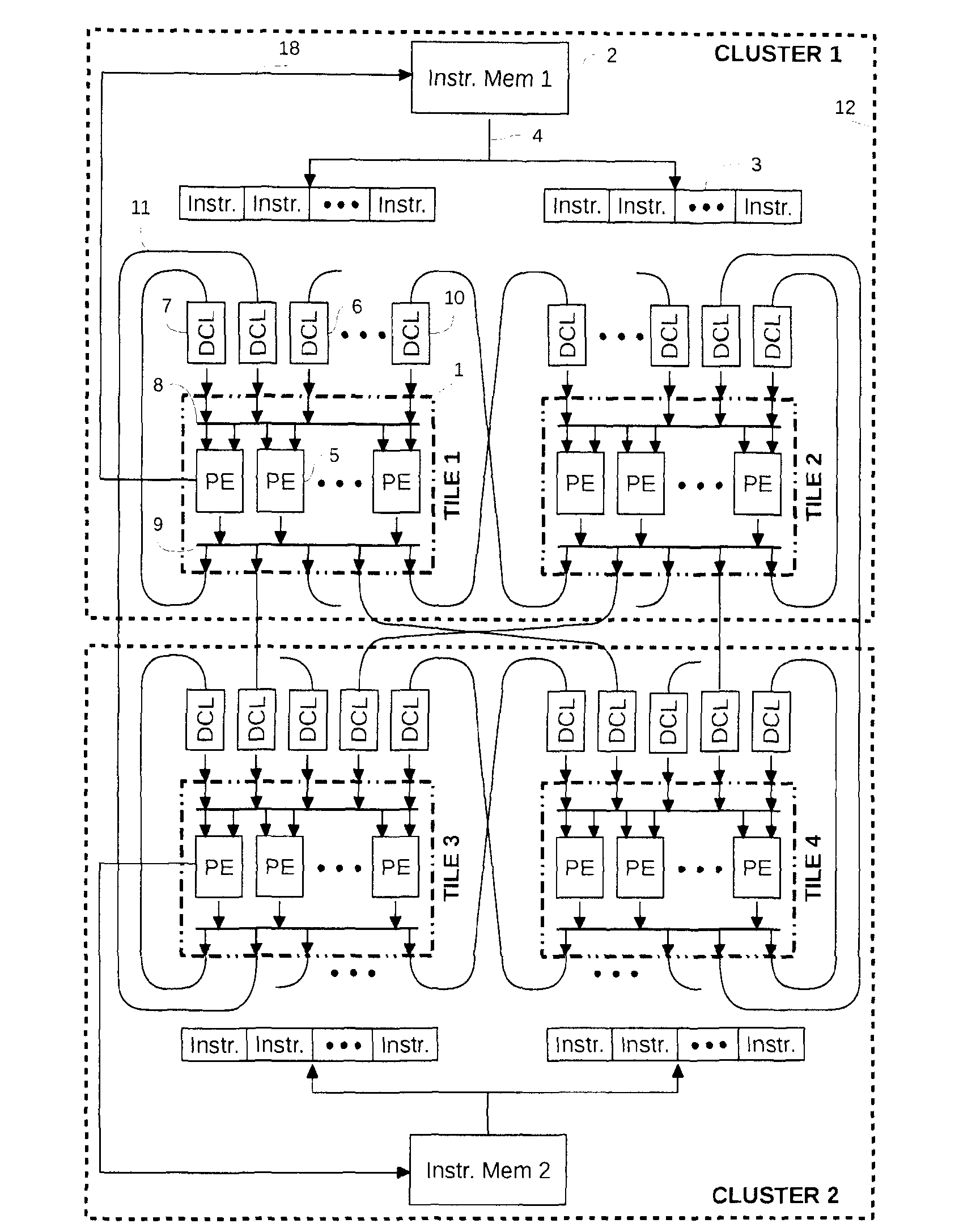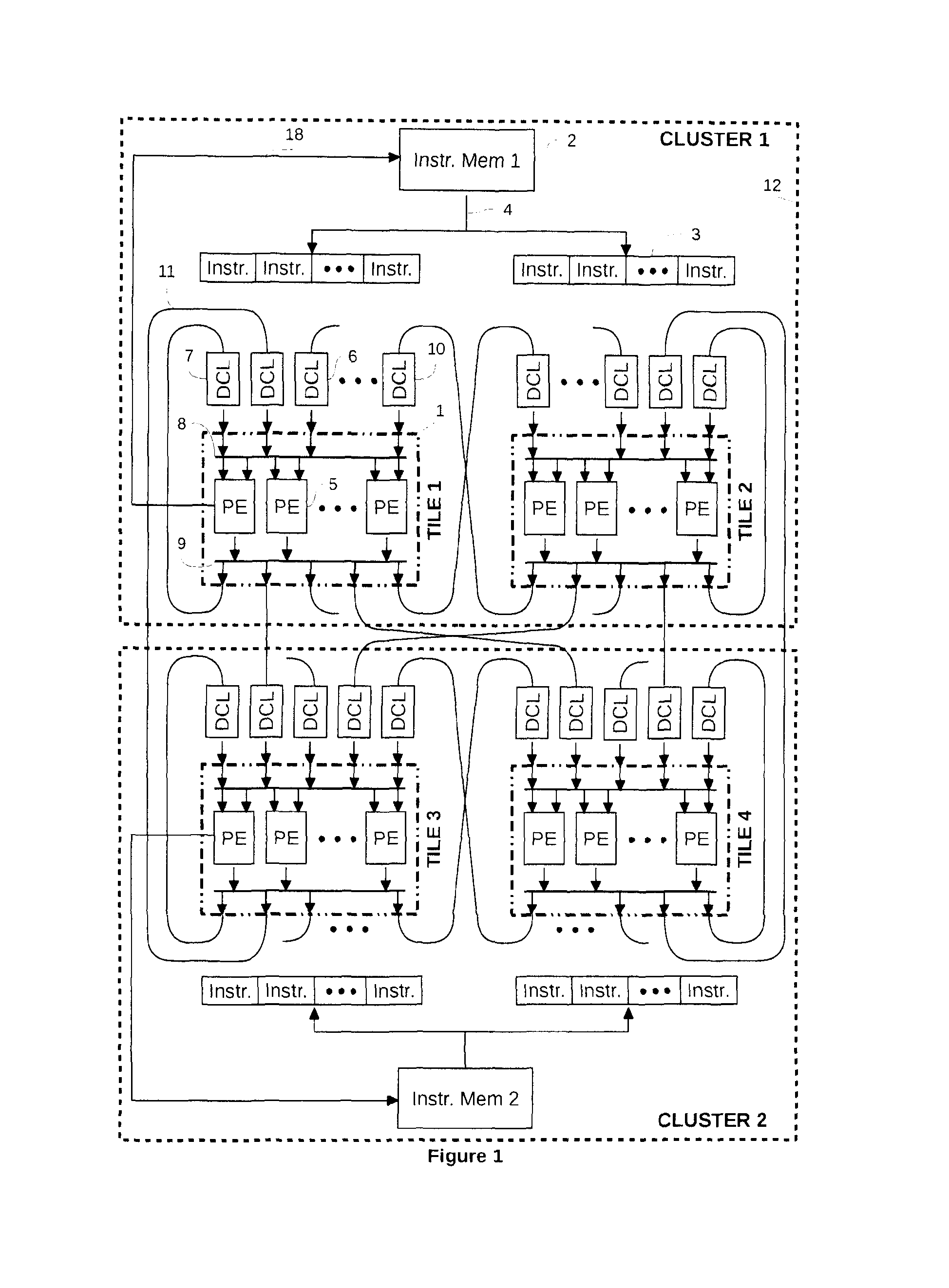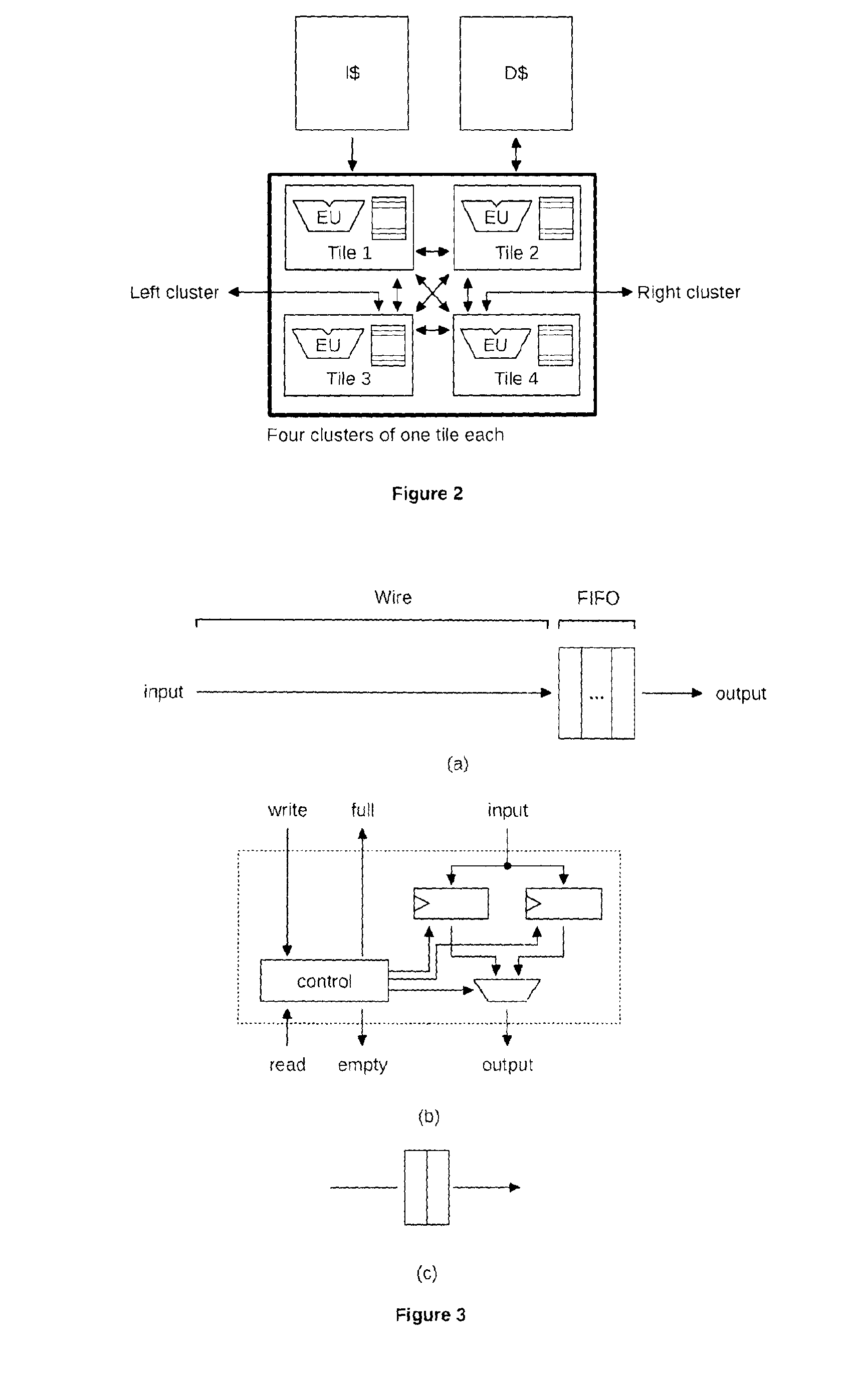Engine control,
oil drilling or military applications can have severe temperature requirements while
avionics and
aerospace are exposed to radiations.
The advanced application and
algorithm support causes computation to be more complex.
Indeed, with simple image and
signal processing applications implemented in early standards, barely all the computation load is executed in small kernels having few instructions but a very high iteration count and very simple control paths.
With new advanced and complex standards, the control part became important leading to important parts of sequential code difficult to parallelize.
Furthermore, complex control paths can even be present inside high computational kernels making them difficult to implement using dedicated hardware.
Embedded platforms dedicated to host embedded systems, are constraints by their environment.
Indeed, most of them are battery powered with limited
battery capacity and poor improvements at each new product generation.
For systems that are not battery powered, heating caused by the
system power consumption leads to cooling issues difficult to
handle in integrated environments.
In high temperature environments like for engine control in automotive applications the cooling capability is further limited.
Due to those issues,
power consumption is the main constraint that future embedded computing platform have to deal with.
Silicon technology used for embedded platforms implementation has also to face limitations.
A problem is that together with
transistor shrink, there are only a limited
transistor scaling regarding their power consumption.
It can be easily observed in high-end FPGA platforms offering
double gate resources at each new generation with no substantial reduction in
transistor power consumption, even if they operate at a same frequency, causing an overall increase in power consumption of components that dramatically limits their usage.
This poor transistor power reduction is even worse in deep sub-micron technology nodes below 65 nm.
Moreover, deep sub-micron technology nodes raise further limitations for their usage as an easy
gate count provider, as it was the case during previous decades.
Those limitations are process variations and leakages.
Process variations are due to manufacturing hazards, leading to important electrical characteristics variations of transistors over a
single component.
Leakages increase transistor power consumption, even if they are not used.
It obviously does not match the embedded constraints of reducing the total power consumption due to a limited
power budget.
Multicore is used to increase overall parallelism execution since limited frequency does not allow to support complete applications using a single processor core even with
coprocessor support.
There are four major issues raised by this approach limiting its use for future embedded computing platforms.
The second issue with heterogeneous multicores is that they are complex platforms that are designed for a precise set of applications.
It is therefore difficult to efficiently port new applications on existent platforms especially for more advanced standards.
The third issue is with
silicon area that increases with the accelerator count.
Heterogeneous multicores have a poor
silicon utilization since few of them are really used at the same time.
The fourth and last issue is raised when
programming those heterogeneous platforms.
Since they group heterogeneous components they require costly manual intervention to partition applications over the available resources.
Platform dependent partitioning causes therefore
reusability issues and cost overhead.
Variable speed in each tile introduces latency issues in the inter-island communication network.
The current heterogeneous multicore approach is very difficult to follow with the fast growing of standards requirements and services.
Even
cell phone
handset platforms that are today implemented using heterogeneous multicore solutions have to face those limitations, even if those handsets benefit of very high production volumes allowing to amortize design costs.
Other markets not driven by very high volumes as it is the case in professional
electronics applications cannot take this approach due to prohibitive
silicon, design and
programming costs.
Nevertheless, it is very difficult to program since algorithms need to be vectorized and
compiler support is either experimental or is limited to very specific language constructs.
Furthermore, it does not support at all sequential code.
When applications became more complex, the difficulty of vectorization limits performances and the power efficiency of this solution.
They have limited
branch support that are achieved in the configuration controller or by using predicated execution.
It is therefore not possible to execute sequential code or kernels with complex control paths on those accelerators.
They have a limited
kernel size support when using a single configuration or they have to face an important power consumption overhead in continual configuration memory loading.
Furthermore, reconfigurable
interconnection fabric introduces latencies due to wire length and their high fanout that cannot be easily pipelined.
Nevertheless, beside their very good programmability and
scalability they are limited in power efficiency due to their use of fully programmable processor cores.
When homogeneous multicores are build with simple scalar RISC cores to be low power, they cannot
exploit ILP in the sequential parts.
Indeed, they have to use communication network for inter-core communication that has inefficiencies for ILP limiting their performances when executing sequential part of the applications.
Nevertheless, their use of fully programmable processor cores and inefficient communication network leads to a low power efficiency which is a major drawback for their use in embedded platforms.
The common data
bus is therefore made of long wires having a high fanout leading to important power consumption.
Nevertheless, token
broadcasting and tag comparisons still need to be done in all queues which is highly power consuming and lessens its power efficiency.
A drawback is the NoC latency that penalizes data communication of instructions belonging to different PE.
The use of separate operands table, the NoC and separate register files reduce the power efficiency of this architecture.
Nevertheless, the out-of-order execution capability of this model is very limited and cannot be used to automatically hide
execution unit latencies without
compiler support.
But in this latter case communications are fixed and programmability is lost.
Those architectures cannot
exploit fine-grain parallelism spanned over several cores, while the proposed architecture can
exploit fine-grain parallelism between tiles inside a cluster.
This means that a flag produced in one core by a comparison instruction cannot trigger
conditional branch execution in other cores.
Indeed, an important change in computation
layout requires a costly reconfiguration process.
Regarding power consumption, a high number of cores increases
throughput but does not increase the overall power efficiency of the platform.
It is an important issue in widely parallel spatial computation where the number of instructions in loops reaches one.
Mitigating
branch delay by unrolling causes an important increase of kernel sizes that limits the use of local instruction buffers.
Indeed, with register indexes, it is not possible to choose to consume a value or not, as in LiteFlow.
 Login to View More
Login to View More  Login to View More
Login to View More 


